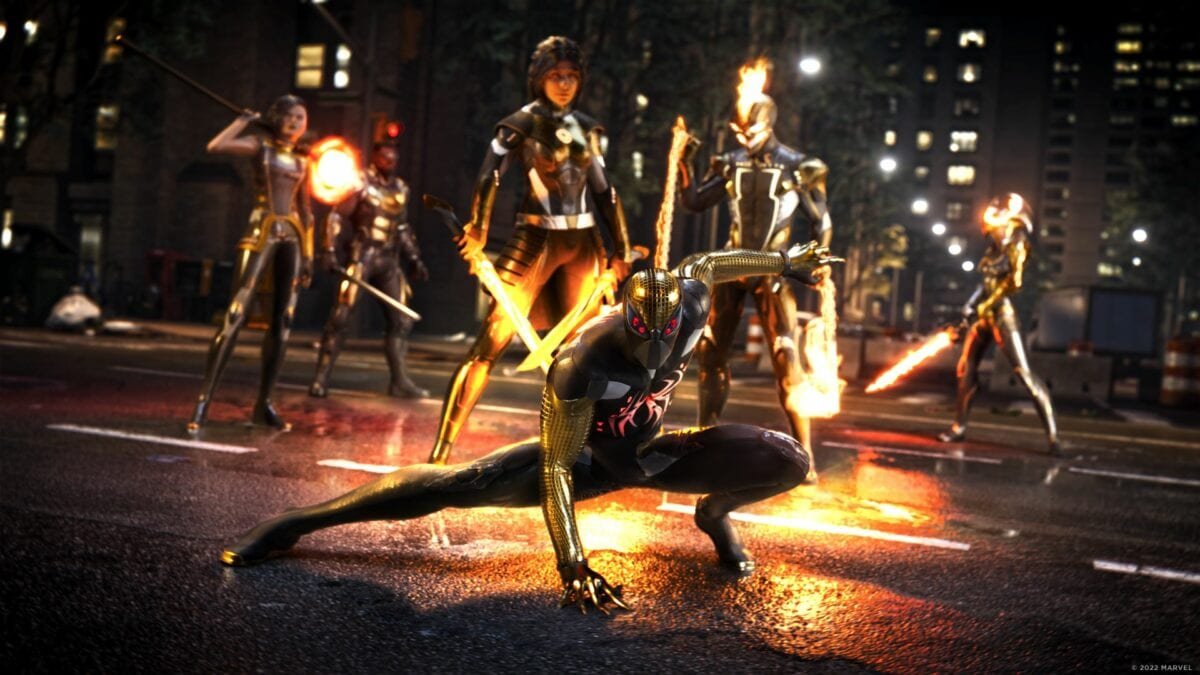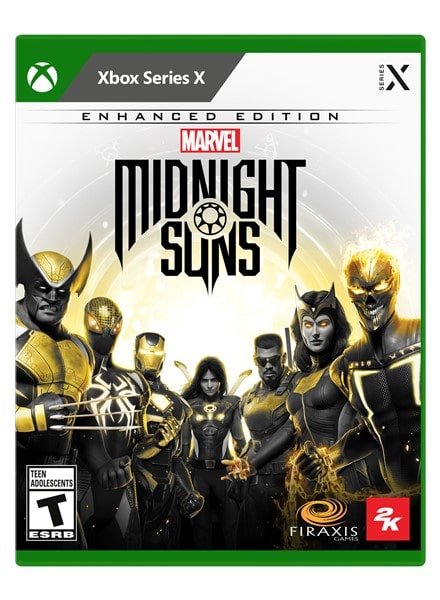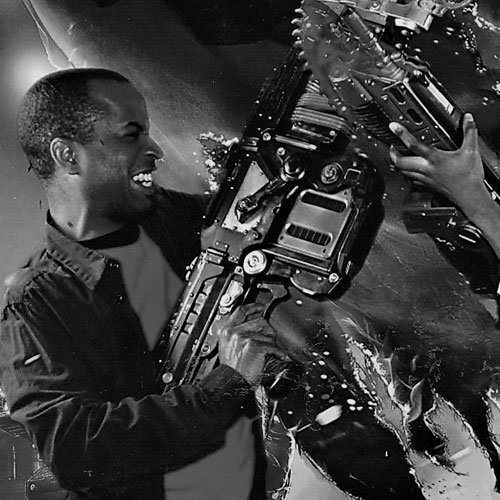When it was first announced in August of 2021 that Firaxis Games, the developer behind the X-COM franchise would be making a Marvel game in the same turn-based, tactical gameplay vein, I was naturally skeptical despite having sunken countless hours into several games in the venerable XCOM franchise, the most recent one being XCOM 2. My skepticism grew once I learned that Marvel’s Midnight Suns would also embrace playing-card mechanics, a growing industry trend that I generally tend to dislike in the console games sphere and would argue that such gimmicks are better suited to mobile platforms.
That being said, there was no way I could stand idly by and watch Firaxis build a new Marvel game from whole cloth without at least taking a crack at it.
In Marvel’s Midnight Suns, players assume the role of “The Hunter,” an original character specially created for this game. The Hunter, who players can choose to assign as male or female, are the reawakened child(ren) of Lilith, a powerful demonic sorcerer also known as the “Mother of All Demons” and the “Harbinger of the Midnight Sun.” Like their mother once was, The Hunter are one of the last remaining members of The Blood, an immortal race charged with protecting the human world from the prophecy of the Midnight Sun, which would see Lilith’s master and Elder God Chthon return to the earthly realm.
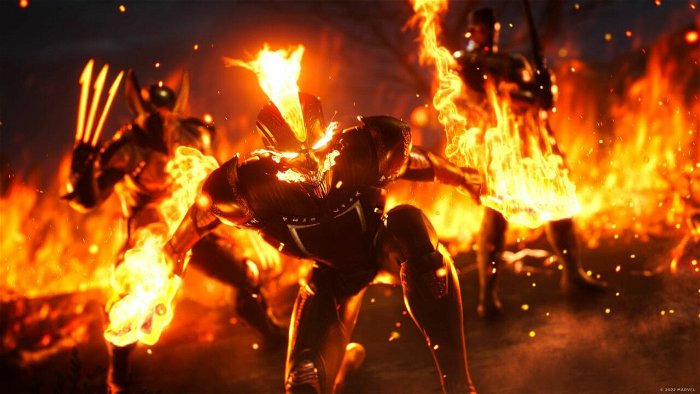
Having defeated and perished alongside Lilith in a climactic battle sometime in the 16th Century, The Hunter are resurrected in modern day by Lilith’s estranged sister Sara (a.k.a. The Caretaker) and our favorite Sorcerer Supreme Doctor Strange. As it turns out, The Hunters’ skills, abilities and memories as a demon slayer are desperately needed again. Lilith too has awoken from her eternal slumber thanks to the meddling of H.Y.D.R.A.’s dark scientist Dr. Faustus, and together they have moved quickly to seize control of Dr. Strange’s Sanctum Sanctorum as well as the minds of several modern-day superheroes and villains to shore up their forces.
Thus an uneasy alliance is struck between The Hunter, The Avengers and a next-generation group of heroes recently assembled by The Caretaker called the Midnight Suns, in order to prevent the prophecy from occurring.
“In Marvel’s Midnight Suns, players assume the role of “The Hunter,” an original character specially created for this game.”
This means of course that players will be rubbing shoulders with Marvel legends, icons, and up-and-comers, including the likes of Strange, Iron Man, Captain Marvel, Spider-Man, Wolverine, The Hulk, Scarlet Witch, Ghost Rider, Blade, Nico Minoru and Magik. Counting The Hunter there are a total of 13 playable heroes in the game, all of whom will gradually unlock and join the team as players progress through the story, as well as four additional DLC characters that have already been announced as part of the Season Pass). Ultimately, it’s from this roster of 17 that players will select their three-hero-squads for missions.
Similar to how missions work in XCOM, in Marvel’s Midnight Suns, players’ squads are dropped into a map that is populated with a number of enemies, and in most cases are tasked with the goal of eliminating them and their reinforcements before being allowed to complete the mission. Sometimes the objective will change to having to defeat or destroy a vehicle, machine, or object that the enemies are protecting, or conversely defend such goals from enemies that are working to accomplish the same. All actions are turn-based and players are allowed to take as much time as they need to make all of their tactical decisions before ending the turn.

This is where the similarities between XCOM and Marvel’s Midnight Suns end, however. Several gameplay elements in XCOM 2 such as the distance characters could move on the grid, the number of times they could attack or move in one turn, or how far characters could see into the fog of war on the map were generally determined by the character class type, equipped weapons, and modifications that players made to them. In Marvel’s Midnight Suns, the maps are much more compact and there is no Fog of War, so the entire battle area along with the heroes, villains, and supervillains within it is visible all at once.
This being a Marvel game, The Hunter and their Avengers/Midnight Suns allies are far more resilient than XCOM’s human soldiers and have no real need for cover. Instead, they use the large environmental objects that regular human characters would normally hide behind as improvised weapons that they can kick and hurl at enemies or detonate in a variety of ways to deal added damage, which is rather fun, I’ll admit.
In Marvel’s Midnight Suns, the maps are much more compact and there is no Fog of War, so the entire battle area along with the heroes, villains, and supervillains within it is visible all at once.
While movement in Marvel’s Midnight Suns is typically limited to just one move per turn versus XCOM 2’s one move per unit per turn, players can use that move to place any character in the squad that isn’t immobilized by a status effect literally anywhere on the map that isn’t already occupied by an enemy or object. In other words, a character can be moved wherever the player wants that isn’t blocked or out of bounds, which is crucial for helping to line up chained or team combo attacks.
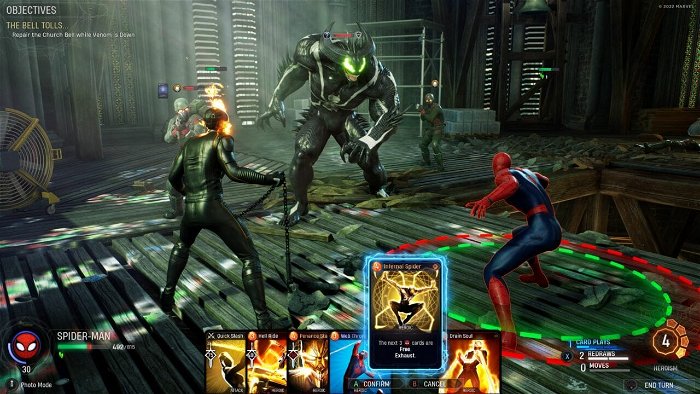
As discussed earlier, the playing card mechanic in Marvel’s Midnight Suns is the biggest wholesale change to the XCOM 2 formula, and for better or worse, it governs virtually all aspects of combat. At the start of each turn, players automatically draw random cards up to a full hand of five from their three squad members’ combined pool (every character has their own bespoke deck of card abilities), and by default players are allowed up to three card plays, two card redraws and one character movement before their turn ends.
While practically all cards grant players abilities to help their squad and/or hurt their enemies in some way, they all inevitably fall into one of three categories, Attack, Skill, and Heroic, with the main difference between them being that Attack and Skill cards grant Heroism points, while Heroic cards consume them. Heroism points are required to unleash their squad’s most powerful individual and/or joint attacks, and they are also needed to perform “free” environmental attacks that don’t require the use of a card play, like kicking a family-size freezer into a group of H.Y.D.R.A. soldiers, or bringing down a streetlamp on top of an enemy’s head.
Therefore players need to be smart in how they use their card plays and focus on building up Heroism early on to give their squad the best chance at victory. At the same time however, they also need to be keenly aware of the nuances that each characters’ unique abilities bring to the battlefield, as well as the many buffs and advantages that each card in their shared deck can grant.

Some cards will allow players to redraw one or more cards in their hand without using up one of their actual redraws, provided that there’s room in the deck. Others will add one or more additional moves for free. Still more will buff the attack power of one or more characters, and some will even reduce or remove the Heroic point cost of the most powerful attacks in the player’s arsenal, leading to some rather exciting ultra-attacks and team-up moves, provided that you’ve bonded closely enough with your team through training and friendship activities in order to access them.
Apart from the engaging, tactical combat, I immensely enjoy how Marvel’s Midnight Suns captures the spirit of both Marvel’s comic book and cinematic universes through its faithfulness to the original source materials in its lore, dialogue, and presentation. The game’s biggest strength is indeed its characters, and it’s quite novel to experience an epic Marvel adventure that focuses more on the arcane corners of its universe so soon after the successful release of MCU films that have also dabbled in them, namely Spider-Man: No Way Home and Dr. Strange in the Multiverse of Madness.
“Marvel’s Midnight Suns can become a real chore outside of its turn-based battles thanks to practically all the other elements of the game being gated by artificial construct that is the game’s Day-Night cycle.”
It’s also a blast to see characters such as Magik and Nico Minoru get a second chance to shine and be discovered following the lackluster live-action film and TV adaptations of their respective books, The New Mutants and The Runaways.
On that note, apart from the stoic, monotone dryness of The Hunter herself (I only played as the female version and can’t speak for the male performance) the writing and especially the dialogue in Marvel’s Midnight Suns is excellent, and the team of voice talents that breathe life into their characters is absolutely top notch once you get over the “this is not the MCU” hump.
It’s a star-studded lineup of vocal talent that in addition to Okano features Spawn’s Michael Jai White as Blade, Marvel’s Spider-Man’s incomparable Yuri Lowenthal as (you guessed it) Spider-Man, Laura Bailey as Magik and Jennifer “Femshep” Hale as Lilith. The entire rest of the cast are equally a joy to listen to, particularly Strange and Stark, who are always hilariously bickering and throwing shade at each other like overgrown children.
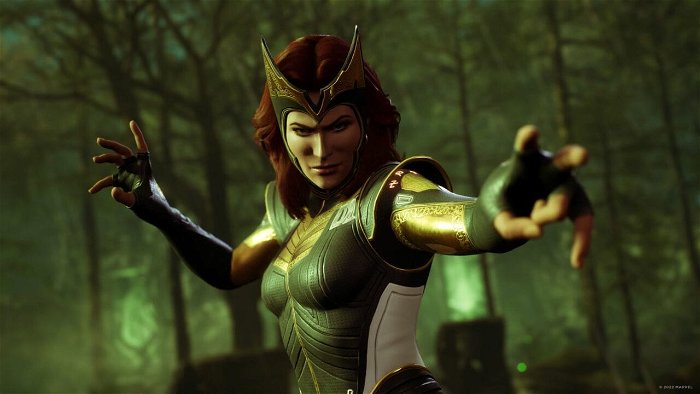
So what’s not to love here? Well, as intimated above, Marvel’s Midnight Suns can become a real chore outside of its turn-based battles thanks to practically all the other elements of the game being gated by artificial construct that is the game’s Day-Night cycle. For instance, every day that The Hunter awakes, there’s always a laundry list of things for them to do, chief among them training and hanging out with the other heroes in order to build and strengthen friendships within team, and following that a visit to the Forge to have Strange and Stark research artifacts that the player has found to unlock new card abilities and items for use in battle.
Once players go out on a mission however, most out-of-battle progression is halted until The Hunter sleeps, which prompts the start of the next day. Consequently, players can’t embark a second mission right after the first, nor can they go straight to the Forge to research any loot they’ve returned with until morning, which drags out gameplay artificially and kills much of the momentum. It’s baffling to me that a group of superheroes called the Midnight Suns would be so strict about their bedtime!
The above issue notwithstanding, Marvel’s Midnight Suns remains a welcome and far less stressful take on the XCOM formula that left me thinking about it and yearning to play more whenever I was away from it during the past week. If you happen to be a fan of XCOM as well as Marvel’s team-focused books, films, and other media, you’ll be both delighted and surprised by the depth of its addictive, card-based gameplay, the chemistry of its characters and its many moments of sharp, comedic wit.
